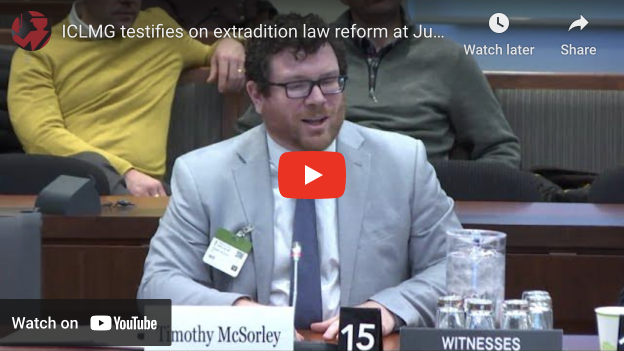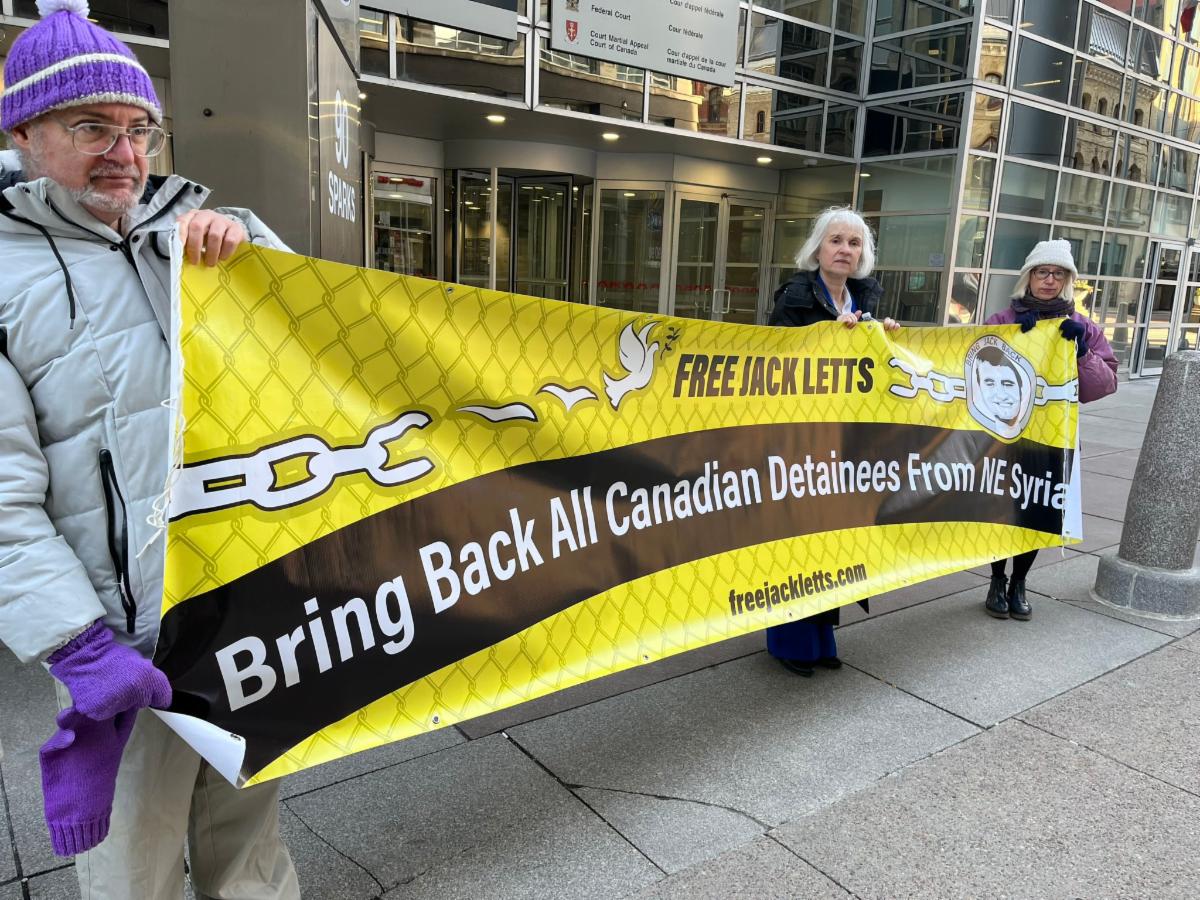ICLMG’s National Coordinator Tim McSorley presented at the Standing Committee on Justice and Human Rights on February 8, 2023 for their review of Canada’s unfair extradition system.
Watch the full panel with Hassan Diab’s lawyer, Don Bayne, and the question period here.
Watch all the interventions on extradition reform here. Witnesses include Rania Tfaily, Hassan Diab’s wife; Alex Neve, former Secretary General of Amnesty International Canada; Matthew Behrens, writer and social justice organizer; and Robert J. Currie, law professor and extradition law expert.
TRANSCRIPT
Thank you Mr. Chair, and thank you to the members of the committee for inviting me to speak with you today on behalf of the International Civil Liberties Monitoring Group regarding the urgent need to reform Canada’s extradition laws.
The ICLMG is a Canadian coalition of 45 national civil society organizations with a mandate to defend civil liberties from the impact of anti-terrorism laws and policies, both in Canada and internationally.
We have been deeply involved in the campaign for justice for Dr. Hassan Diab, whose devastating case you have heard about at length. This has led us to closely examine the need to reform Canada’s extradition laws in order to prevent abuses of civil liberties and human rights committed in the name of countering terrorism.
As you are aware, Dr. Diab was arrested by the RCMP in 2008 for extradition to France on accusations of carrying out a terrorist attack in Paris in 1980.
While Dr. Diab was accused of committing a crime 30 years earlier, his arrest, hearings and eventual extradition took place squarely in the political and social context of the so-called “War on Terror” that led to severe rights violations in Canada.
This same context applied to France. The same year as Dr. Diab’s arrest, Human Rights Watch issued a damning report that found that, “French counterterrorism laws and procedures undermine the right of those facing charges of terrorism to a fair trial.”
The report documented that it was common practice for those held on suspicion of terrorism to face psychological pressure during custody. This sadly reflects Dr. Diab’s experience of prolonged solitary confinement, the length of which amounted to torture, in violation of international human rights law.
The report also raised concerns that judges had allowed the introduction of unsourced intelligence without sufficiently probing the validity of the information. This includes judges allowing for the inclusion of testimony obtained under torture in foreign countries, in violation of the Convention Against Torture, to which France was and is a signatory. Once again, we saw the use of unsourced intelligence used in the case of Dr. Diab.
All of this was known before Dr. Diab’s extradition to France. Yet he was still extradited, and faced the consequences of France’s anti-terrorism regime.
An extradition process that appropriately considers human rights, civil liberties and the right to a fair trial would have taken all these elements into account. Instead, given France’s status as an ally and extradition partner, the detailed and serious problems of the country’s anti-terrorism system were not appropriately considered.
Others have spoken about extradition cases where human rights have been violated. You have also heard how Canada has an extradition agreement with India despite reports of torture and India not being a signatory to the Convention Against Torture. Importantly, India also justifies their grave human rights abuses as necessary in their self-defined “fight against terrorism.”
Our own research has found that at least 10 countries that Canada has extradition treaties with have been singled out in just the past three years by the UN Special Rapporteur on the promotion and protection of human rights and fundamental freedoms while countering terrorism for introducing or adopting rights-violating anti-terrorism laws. This includes France.
Under Canada’s current extradition system, though, we continue to run the risk of extraditing individuals to face unjust, rights-violating legal systems under murky and politicized accusations of “terrorism.” Indeed, there is the real risk that France could seek a second extradition of Dr. Diab, and that our flawed system would grant it, despite all we now know and all that Dr. Diab has been through. I would also direct the committee to a 2021 letter signed by 110 Canadian jurists warning against any new extradition proceedings against Dr. Diab, based on flaws in Canada’s extradition process and the French judicial system.
Given all this, we join others in calling for reforms to Canada’s extradition laws. We have publicly endorsed the recommendations of the Halifax Colloquium, as shared with you earlier.
Given time restraints, I would highlight the following key areas of reforms:
- First, the committal process must be modified to ensure it is not as heavily weighted in favor of the requesting state, including allowing the individual sought for extradition disclosure of relevant evidence and to be able to bring their own evidence.
- Second, that Canada’s domestic and international human rights and civil liberties obligations be explicitly taken into account.
- Third, that there be a re-balancing to increase the role for judges in weighing factors such as fairness, civil liberties and human rights, among others, in the final decision for extradition.
- Fourth, that there must be increased transparency regarding extraditions in Canada.
- Fifth, that Canada’s extradition arrangements with foreign countries should be reviewed on an ongoing basis. As a starting point, Canada should not have extradition treaties with countries that have records of human rights abuse or have failed to ratify human rights treaties.
Thank you for your time and I look forward to your questions.
Since you’re here…… we have a small favour to ask. Here at ICLMG, we are working very hard to protect and promote human rights and civil liberties in the context of the so-called “war on terror” in Canada. We do not receive any financial support from any federal, provincial or municipal governments or political parties. You can become our patron on Patreon and get rewards in exchange for your support. You can give as little as $1/month (that’s only $12/year!) and you can unsubscribe at any time. Any donations will go a long way to support our work. |





 On Jan. 20, 2023, the Federal Court of Canada ruled that the federal
On Jan. 20, 2023, the Federal Court of Canada ruled that the federal